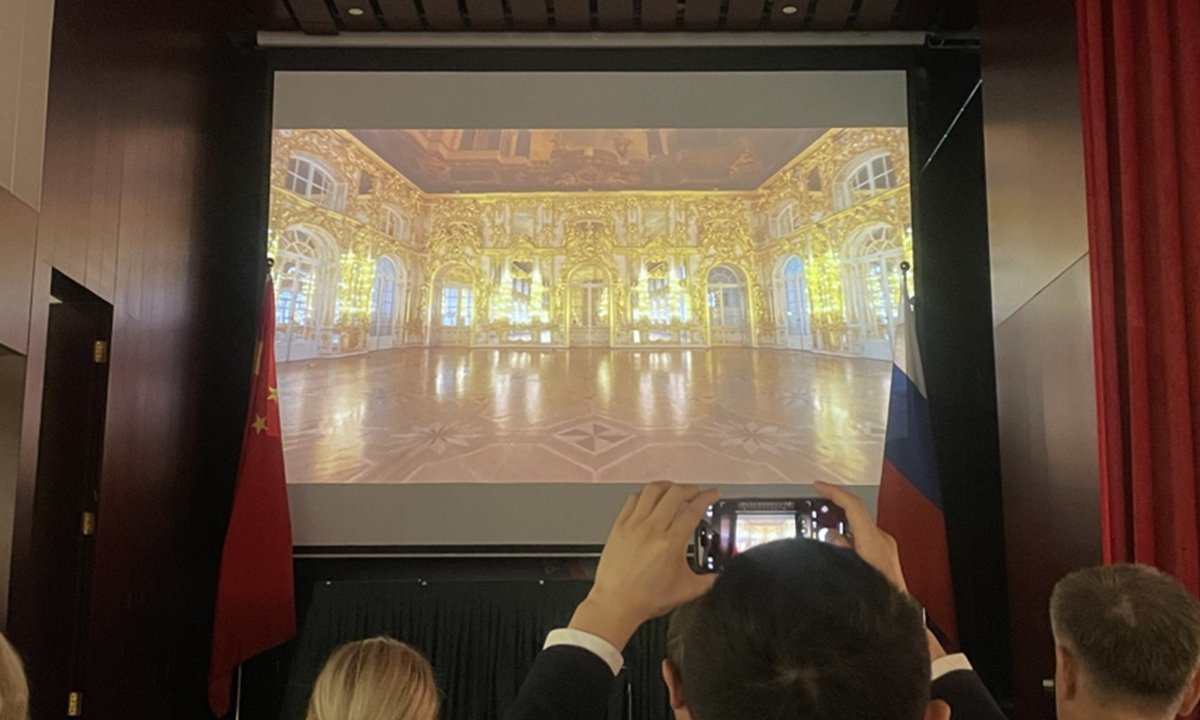In a unique and poignant instance of international cultural collaboration, a skilled group of Chinese craftsmen are headed to Russia. Their mission is special: to meticulously restore the splendid Chinese lacquer panels gracing the walls of the Chinese Hall within the renowned Catherine Palace, located near the historic city of St Petersburg.
This restoration effort stems from a significant contract inked on October 10 at the Russian Cultural Center in Beijing. Beijing Xinxingshi, the company at the forefront of this initiative, is tasked with overseeing the restoration work. Han Jiaming, the chairman of the company, shared insights into the team of craftsmen poised to undertake this endeavor. Predominantly in their advanced years, these craftsmen, many in their 70s, are veritable repositories of traditional knowledge and expertise. These artisans, with decades of experience under their belts, promise to utilize time-honored and authentic restoration techniques, ensuring that the panels regain their erstwhile splendor.
Han emphasized the profound cultural and diplomatic undertones of this restoration project. In his words, rejuvenating the Chinese lacquer panels isn’t merely an exercise in conservation; it’s an emblematic representation of Chinese culture reaching global shores. Furthermore, such collaborations are instrumental in fostering deeper mutual appreciation and camaraderie between the people of China and Russia. In essence, this endeavor is more than just about restoration; it symbolizes the confluence of histories, cultures, and friendships.
The Catherine Palace, nestled about 17 miles from the bustling heart of St Petersburg, is a testament to architectural grandeur and historical significance. This magnificent edifice forms an integral part of the World Heritage Site, christened ‘Saint Petersburg and Related Groups of Monuments.’ Visitors to the palace are invariably captivated by its sprawling gardens, intricate architecture, and a rich trove of sculptures, paintings, and artifacts, with origins tracing back to the period spanning the 18th to the early 20th century.
Beyond the palace’s walls lies the serene Tsarskoe Selo State Museum and Heritage Site, encapsulating the palace and the verdant park surrounding it. However, the palace bears scars from the past. It faced significant destruction during the tumultuous times of World War II. While it has since been rebuilt, the restoration process is ongoing, with concerted efforts being made to revive the interior decorations, sculptures, and artworks.
Of particular interest within the palace is the Zubov Wing. The second floor of this section housed the private quarters of the empress. The most grandiose among these chambers is the Chinese Hall, a space earmarked for welcoming aristocrats and international dignitaries. Intriguingly, the museum was recently gifted two glass slides from the mid-19th century, offering glimpses into the Chinese and Lyons Halls as they appeared in the 1860s. These slides provide invaluable details regarding the decorations and furnishings of the time. The Chinese Hall, in particular, is adorned with the distinctive Chinese lacquer panels, vibrantly painted door panels, and period-appropriate furniture, all waiting to be restored to their former glory with the help of the Chinese craftsmen.
READ MORE:
